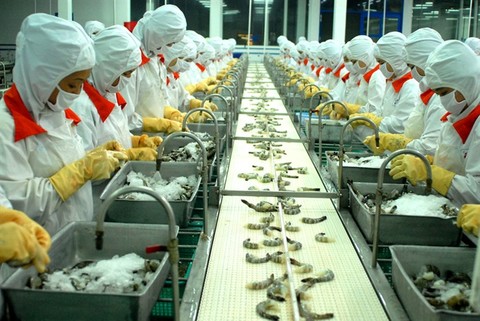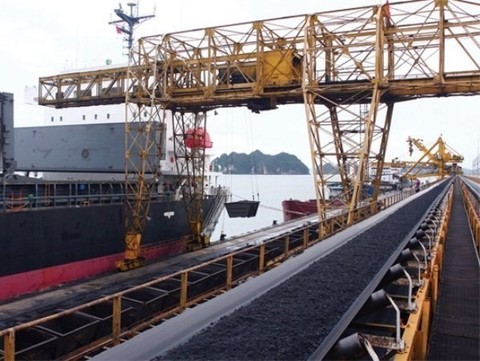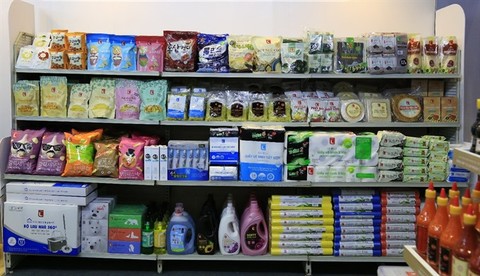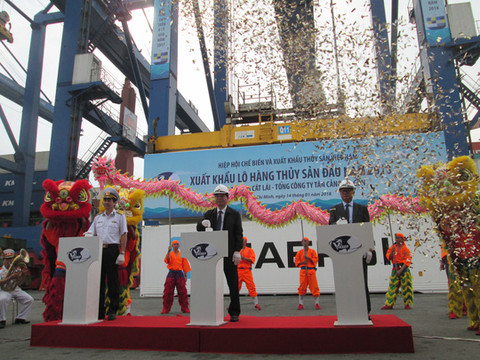Experts decry Vietnam’s risky coal compulsions
Experts decry Vietnam’s risky coal compulsions
With Vietnam planning to signigicantly increase its number of coal plants over the next decade, potentially posing great risks to the environment, international experts have advised the country to work on a cleaner path forward.
Last week, John Kerry came to Hanoi to attend an international conference on green energy and sustainable economic growth for Vietnam. The former US Secretary of State now acts as a senior energy expert, working with Vietnam’s government on an alternative to its coal plan. The aim is an alternative that could provide the same amount of electricity, but use hydroelectric dams and solar panels instead of fossil fuels.
“It is a scheme that would help save Vietnam billions of dollars, prevent pollution-related deaths, and keep greenhouse gases (GHGs) out of the atmosphere,” Kerry said.
Under Vietnam’s revised Power Development Plan, the ratio of coal-fired power in Vietnam’s total energy mix will rise from 30.4 per cent in 2015 to 49.3 per cent in 2020, 55 per cent in 2025, and 53.2 per cent in 2030.
Vietnam currently has more than 20 coal-fired power plants with total capacity of over 13,000 megawatts (MW).
“I’ve learned that Vietnam is planning to build a massive number of coal plants until 2030. I think this is not a smart decision, as it will cause great risks to the environment and make it hard for Vietnam to fulfil its international commitments to cut down GHGs,” he said.
“Currently, Vietnam’s energy industry largely depends on fossil fuels, but coal is one of the most harmful materials to the environment. In addition, the majority of technologies in coal-fired power plants in Vietnam are of low quality, contributing to environmental pollution in the country.”
According to a report by US-based Natural Resources Defense Council (NRDC) released two weeks ago, Japanese domestic plants use a process called selective catalytic reduction to reduce nitrogen oxide emissions, while plants financed by Japan abroad use low nitrogen oxide burners, a less effective technology. For example, the nitrogen oxide limit at Vietnam’s Hai Phong II plant – a Japanese-financed plant operating since 2013 – is nearly 29 times higher than the Japanese standard, at 438 parts per million.
In another case, environmentalists organised protests in 2015 because of the air pollution from the Vinh Tan thermal power complex, which was financed by China, South Korea, and Japan. Local communities have expressed similar concerns around ongoing projects such as the Long An coal-fuelled power centre near Ho Chi Minh City, which would pollute water and air, and affect the 13 million residents of the area, according to the report.
USAID Vietnam mission director Michael Greener also advised that Vietnam create favourable conditions for renewable energy development, instead of focusing on coal-fired power.
He said that the country has been a net importer of coal since 2015, because of its narrowing domestic supply. This could lead to high power prices due to dependence on the world market.
Moreover, heavy reliance on coal power will also deprive Vietnam of opportunities to attract high-quality foreign direct investment, Greene said. Many large foreign firms tend to use renewable energies for their production and business, a need that is hard to satisfy in Vietnam.
Barriers for renewable energy development
Deputy Minister of Industry and Trade Hoang Quoc Vuong said at the conference that even though coal-fired power can cause environmental pollution and be harmful to health, Vietnam still has to
depend largely on fossil fuels to produce power.
“Due to the high costs of renewable energy and an annual 10-15 per cent rise in domestic demand for power, we will have to boost coal-fired power development,” Vuong said. “We clearly want to develop renewable energies, but it remains very difficult to do due to technical difficulties and the lack of stability of wind and solar power in the country.”
As proof of the government’s willingness to lure more investment into solar power projects, Vuong named the prime minister’s Decision 11/2017/QD-TTg on supporting the development of solar power projects in Vietnam. Under its provisions, the Electricity of Vietnam (EVN) is responsible for buying all electric output from on-grid solar power projects at a feed-in-tariff (FiT) of 9.35 US cents per kilowatt hour (kWh).
“We have received solar energy investment proposals for over 15,000 MW in the provinces of Ninh Thuan, Binh Thuan, Dak Lak, and Tay Ninh. We have added 4,000MW of this to the national power
development plan, and may do the same for another 4,000MW,” Vuong said. “However, it may be difficult to absorb this new volume of electricity, because the current power infrastructure remains weak.”
According to a representative of a wind power firm in Vietnam, this particular firm spends 10-11 US cents to produce 1kWh of power. “However, the FiT is only 9-10 US cents, making it hard for us to recoup investment capital and gain profits,” he said.
Climate change expert Koos Neefjes told VIR that Vietnam should not go against the global trend of developing renewable energy.
“I think that Vietnam needs to stop investing in coal power, including projects with foreign investment, because of social, environmental, and economic benefits from the alternatives in renewable energy,” he said. “People keep saying that it is too expensive – which they cannot actually prove – and give other objections, like the intermittency of wind and solar power or the electrical grid capacity. This can be dealt with in other countries, so why not in Vietnam?
“These are myths that have been busted already, on the international stage as well as in Vietnam,” he said.
Electricity of Vietnam (EVN) estimates that around $123.8 billion will be needed to develop the national power system within the next twenty years. Spending would average $6.8 billion per year. Of this, 66.6 per cent would be spent on power plants, with the remaining 33.4 per cent earmarked for network development.
Vietnam plans to invest in up to 98 power plants with a total capacity of 59,444MW. EVN would build 48 of these, producing 33,245MW with an estimated total investment of $39.6 billion.
However, Kerry said that Vietnam could mobilise sufficient capital and call for more investment into renewable energy development, “if the government had more favourable policies for this type of energy.”
According to Neefjes, the government should stimulate this investment through policy, including better agreements on build-operate-transfer projects. Foreign companies and investors would need to feel that the risk of not getting paid for the power they produce is low, backed by bankable, enforceable power purchase agreements.
“That is lacking at the moment and the perception is that investing in Vietnam’s power sector carries high risks, which makes banks especially nervous,” he said.
“By tackling this issue and a few other things, Vietnam could see a boom in renewable power generation to the benefit of all. I recently saw the windpark in Bac Lieu as well as the new, nearly-completed coal power plant in Soc Trang. The first is becoming a tourist site, and the second will displace more and more people because of solid waste production and transport needs. It will become a very dirty place and a source of pollution for land, rivers, the sea, and for millions of people all over the south of Vietnam for decades to come. For me, the choice is easy,” Neefjes said.






















